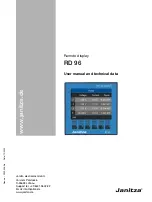
Normal Power Flow
When set to the
X->Y
mode, kW and metering values will show as positive for normal
power flow when power is flowing into the Y terminal and show as negative for reverse
power flow when power is flowing into the X terminal. Selecting the
Y->X
mode reverses
the application of the sign, resulting in positive for power flowing into the X terminal and
negative for power flowing into the Y terminal.
Calculations with the default
X->Y
setting:
•
Total kVA
value as reported on DNP is computed and is the sum of the
kVA
value from
each pole. The
kVA
value for each pole is computed as the square root of (kW*kW +
kvar*kvar). So, the
Total kVA
value is always a positive number.
•
Total kW
value is computed and is the algebraic sum of the
kW
value from each pole.
This can be negative or positive.
•
Total kvar
value is computed and is the algebraic sum of
kvar
value from each pole.
This can be negative or positive.
• For voltage and current flowing in the same direction (X->Y), the
kW
value is positive.
The
kvar
value is dependent on leading or lagging current.
• For current flowing in the opposite direction of voltage (Y->X), the
kW
value is
negative. The
kvar
value is dependent on leading or lagging current.
• The
MWH
value is accumulated separately for the
positive kW
and
negative kW
values. With the
X->Y
setting, positive power consumption is accumulated into the X->Y
column data, and negative power consumption is accumulated into the Y->X column
data.
System Type
Select from the drop-down list:
Multi-Grounded
(default),
Uni-Grounded
,
Uni-
Grounded Solid
,
Uni-Grounded Resistive
,
Uni-Grounded Reactive
, or
Uni-
Grounded Resonant
. The selection affects how the
Overcurrent
element and
SEF
element directionality are determined.
Directional Protection
Directional fault determination is made based on the signals available within the specified
protection element response times. This means directional determination never retards
IntelliRupter fault interrupter tripping times. However, directional measurements of fully
asymmetric faults improve with longer signal processing times. Consequently, minimum
response times of 2 cycles or greater result in very secure directional determination.
The directional characteristic maximum torque angles used by the IntelliRupter
fault interrupter are only specified for Terminal-Y faults and are shown in Table 1 on
page 23. Therefore, Terminal-X fault maximum torque angles are 180° from those shown
for Terminal-Y. Refer to the
Setup>General>System>System Type
screen for all system
grounding options.
Table 1 lists the operating current and reference voltages used for torque angle mea-
surements, along with the maximum torque angles (MTA) for Terminal-Y. Torque angles
are combined to determine direction of phase-to-ground, phase-to-phase, phase-to-phase-
to-ground, and three-phase faults. SEF fault direction is determined separately and uses
zero-sequence torque after it has been filtered. SEF filtered zero-sequence torque is used
when the
SEF
element is the only protection element timing.
22 S&C Instruction Sheet 766-530
General Setup
















































